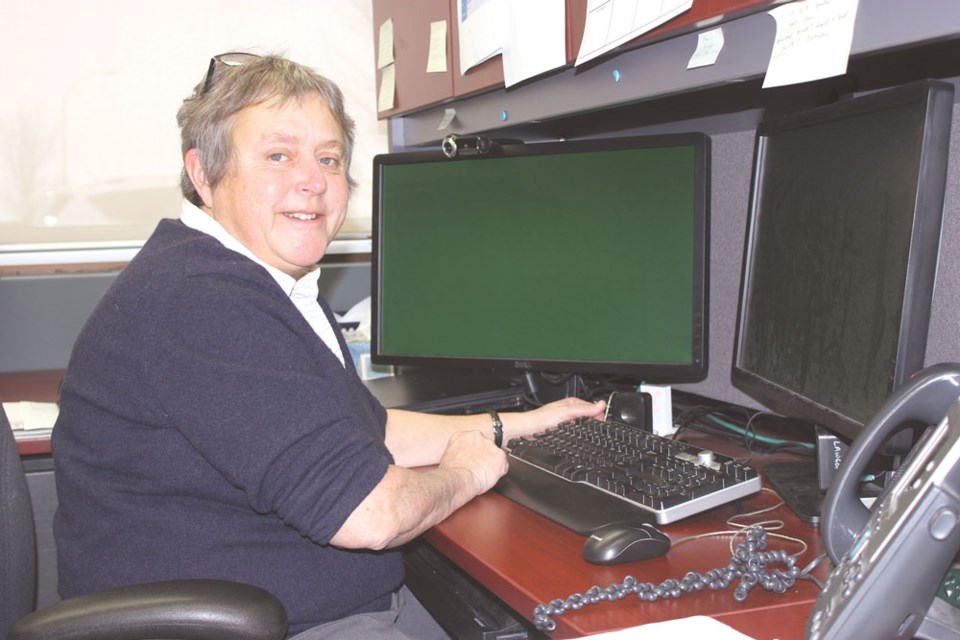The South East Cornerstone Public School Division has become a provincial leader in teaching computer coding to its students.
The division is the first in the province to introduce a program called Coding Quest, which is free for schools and offered through the Learning Partnership. Eighteen of the 38 schools in the school division are participating in Coding Quest, and more than 725 students are registered.
Peggy Lawson, who is the program manager for Coding Quest in South East Cornerstone, said that Pleasantdale School in Estevan has been involved with Coding Quest for much of the school year, and Spruce Ridge School is about to start up. A number of rural schools have also registered.
Twenty-eight of the 36 classrooms registered for Coding Quest are elementary classrooms, but some middle years classrooms are involved.
Lawson said the program has been well received. It was brought to the division after Lynn Little, the division’s director of education, heard about the program through the Learning Partnership, and brought it to Lawson’s attention before Lawson retired from her job as the director of instructional technology.
“We introduced the concept to our principals at a meeting last year in the spring, and many got excited about it then,” said Lawson.
Coding Quest is a program designed to help students learn to code.
“When I go into classrooms to work with students, their excitement is infectious,” said Lawson. “They’re fully engaged and so excited about what they are able to make the computers do.”
The students will take what they learn to create a computer game based on the coding.learned.
“Then the program culminates in an arcade where the students can showcase their games,” said Lawson.
The arcade will happen in several locations later in the school year, and will be open to the public.
“We’d like to have the students be able to show what they’ve learned throughout the year,” said Lawson.
Coding Quest started in other parts of the country in the 2016-17 school year, following a few pilot projects. Lawson said South East Cornerstone is excited to be the first school division to offer the program, and it will expand to other divisions next year.
“We don’t have a provincial curriculum for coding in the elementary ages, but just like learning languages, it’s often easiest for students to begin learning coding at the early stages, at an early level, and that will help build interest, so that by the time students reach high school, it’s not something brand new to them, but something they’ve been working on for many years,” said Lawson.
She compares coding to a recipe used to make a meal, except the coder is actually writing the recipe and giving instructions to the computer for what to do.
“We often think of computers as very smart, which is incorrect,” said Lawson. “Computers are just very fast. It’s the coder that’s the smart person.”
Not only can coding lead to possible job opportunities at a later date, Lawson believes learning how to code is wonderful for developing the 21st century skills that students need to learn, like the ability to break down a complex problem into manageable tasks.
“Problem solving is one of those essential skills that is often hard to teach as a single objective in an outcome in a class,” said Lawson.
Students learn to work in teams as well through coding, she said. Each team member makes a significant contribution. Students also learn to write instructions so that others can use the program, in this case the game.
“But perhaps most obvious or most easily recognizable are the math skills that are brought into coding,” said Lawson. “Students learn about ‘x’ and ‘y’ co-ordinates well before it becomes part of the formal curriculum. By the time they reach that in the subjects, they already have practical experience in what changes in ‘x’ and changes in ‘y’ mean.”
The bonus is they get to work on a video game, which carries an obvious interest to young people.
“When you tell students that they’re actually going to be creating games, they get very excited and very engaged,” said Lawson.
Those who might not be interested in games are usually thrilled to make interactive games, in which the player can interact with the character.
“So every student has their own key drive, and I have yet to see any students that aren’t thrilled learning with this program,” said Lawson.
Coding Quest is designed to be very flexible, Lawson said, and to work with the teachers’ schedules. Some schools started early in the school year, while others will condense the experience into a couple of months.
“The flexibility is much appreciated, I think, by the teachers,” said Lawson.
She is optimistic that more schools will join Coding Quest in the next school year. If they’re interested in trying it for next year, now is a good time to starting learning about it.
It’s an experience that the division hopes all students can eventually have.
“Every student should have the experience of learning how to code,” said Lawson.




